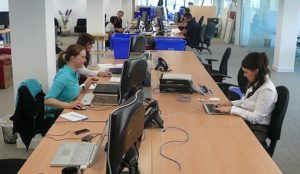In the June 2016 edition, UX Matters asked its expert panel what they see as the next big thing in user experience. Here’s my contribution.

User experience seems to go in cycles. When I first started working in what we now call user experience, we tended to focus mostly on systems for the workplace. If you look at the System Usability Scale (SUS), which is probably the most widely used questionnaire in user experience, you’ll see that the questions are all couched in terms of the system—and some of the questions really make sense only in that context. For example, ‘I found the various functions in this system were well integrated.’
At that time, I struggled to get clients to consider the usability of their paper forms—even though that was how most data arrived in organisations. The idea was that, if you made the systems usable for staff, the way the data arrived didn’t really matter—yet, the dominant costs in many organisations were around dealing with the problems poorly designed paper forms caused.
Then, along came the web, and our focus changed. Paper? Who cared? It was all about making websites easy to use. Now we started to ignore the needs of staff, too—after all, if the customers on the web were self-serving, surely we wouldn’t need staff any more would we?
It’s taken the best part of a couple of decades, but at last, we seem to have got used to the idea of the internet. It’s a very useful technology, but it’s just technology. I’m lucky enough to work mostly with the Government Digital Service in the UK. Our Executive Director, Stephen Foreshew-Cain, recently published ”Where We’re At, and Where We’re Going,’ which included this statement: ‘It’s not about computers. The important thing that’s changing here isn’t the IT, it’s the people.’
So what does that mean for our future?” It means;
- relentlessly focusing on users and their needs
- understanding that users includes people in workplaces, as well as customers and citizens
- bringing in all aspects of user experience, including good old paper.
If users want to use it, let’s design it to work well — irrespective of whether it’s a new or old technology or whether it’s within or outside the workplace.
